The Nakasendo is an ancient road that stretches from Tokyo to Kyoto, through the mountains of Central Japan. With daimyo, samurai, and even members of the imperial family using the road, the food had to be top class. The post towns of the Nakasendo also served the masses and street vendors sold local delicacies to passers-by. This has been true since ancient times and it remains the case today. It’s no wonder that a strong culinary culture still exists on the Nakasendo. In this article, I will introduce some of the food and drink with connections to the Nakasendo. And at the end of the article, I will take you on a deep dive into Echizenya, a teahouse on the Nakasendo, and their mission to bring back the family’s ancient culinary secret once lost in time.
Read on to learn about:
- Gohei-mochi
- Oyaki
- Kuri-kinton
- Soba
- Hoba-sushi
- Sunki
- Sake
- Hyakusou
- Sanmon-mochi (with a deep dive)
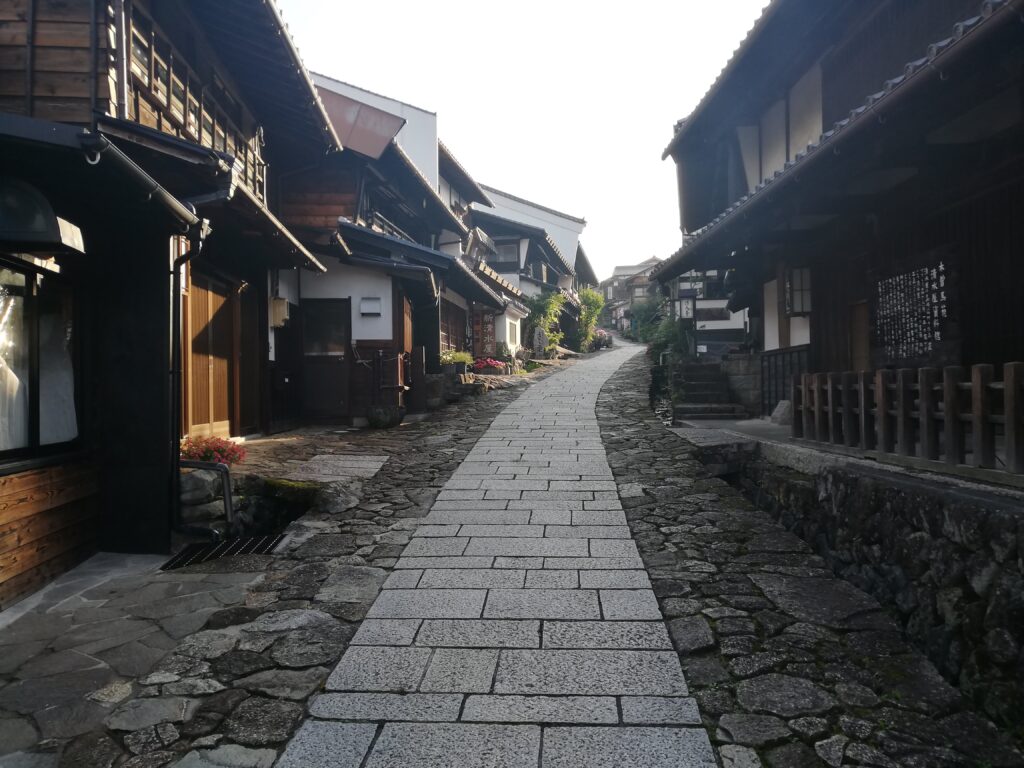
Gohei-Mochi

Gohei-mochi is maybe best described as a slab (or slabs) of mushed-up rice on a stick which is then coated in whatever flavor the particular local area you are in does it, and then grilled. They are native to Central Japan in Gifu, Nagano, and Aichi prefectures. You can get soy sauce and sugar, miso, even walnut toppings, and more. The texture is totally different from regular mochi, it’s a lot grainier and a lot less sticky. The reason for this is that gohei-mochi uses common Japanese short-grain rice, whereas mochi uses the glutenous mochigome variety. Gohei-mochi comes in two shapes. One is the waraji, named after a Japanese straw sandal, of which it shares the same shape. The other shape is a rounded gohei mochi. Shapes differ by region. You can grab these from street vendors in several post towns of the Nakasendo including Magome, Tsumago, and Narai, as well as throughout Gifu, Nagano, and Aichi prefectures.
Oyaki
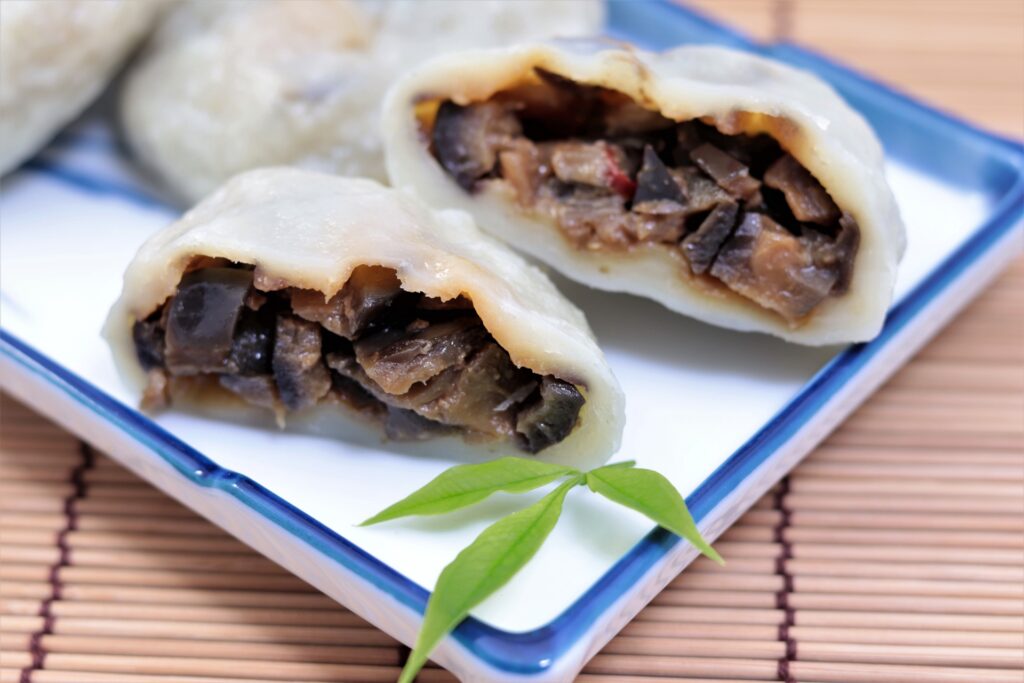
Oyaki are steamed buns with various fillings and are mainly native to Nagano prefecture. They are traditionally made with buckwheat flour. Buckwheat is more suited to the mountainous terrain of the Nakasendo than rice is. And so, as an alternative source of sustenance, the local people ground buckwheat into flour and made it into oyaki. Popular fillings include nozawana (leafy local veg), eggplant, pumpkin, mushroom and anko (sweet red beans). You’ll find them on sale in the post towns of Magome, Tsumago, Narai, and all throughout Nagano Prefecture.
Kuri-Kinton
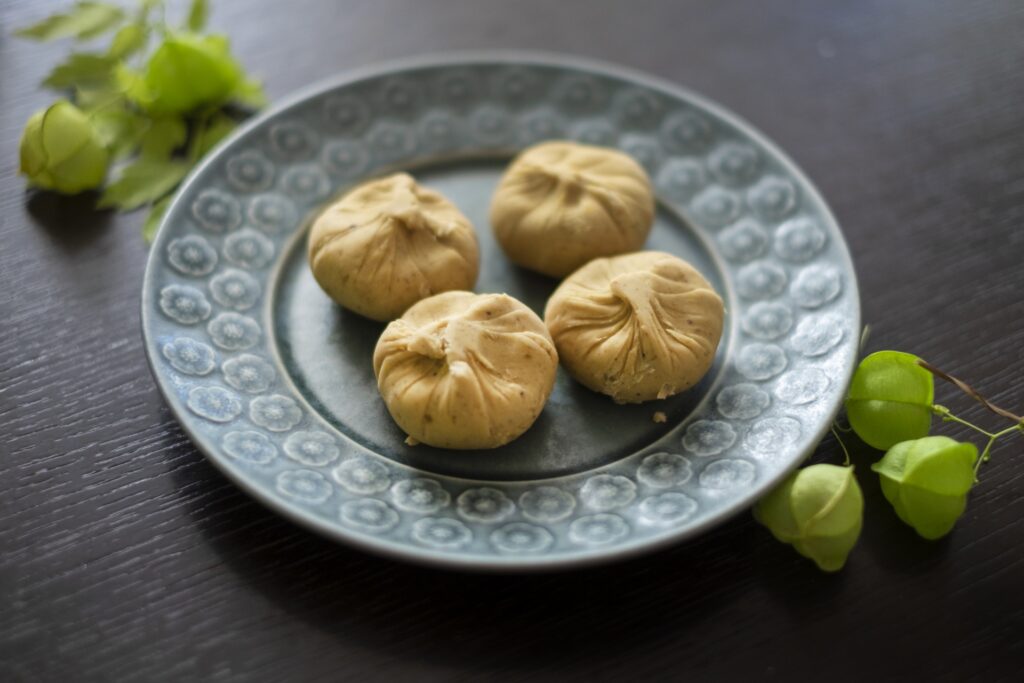
Kuri-kinton are candied chestnut sweets that originate from Nakatsugawa City in Gifu Prefecture. The area is famous for producing delicious chestnuts. You will find that the city is full of wagashi-ya, or Japanese sweet shops. During the chestnut harvest season in autumn, you can expect to see long queues of people traveling from far and wide to get their hands on fresh kuri-kinton. The queues alone are a sight to be seen. You can find such Japanese sweetshops with kuri-kinton for sale in the post towns of Oi, Nakatsugawa, Magome, and Tsumago as well as all throughout the city of Nakatsugawa. The shops Kawakamiya and Suya in Nakatsugawa have a particularly long history and are very popular.
Soba
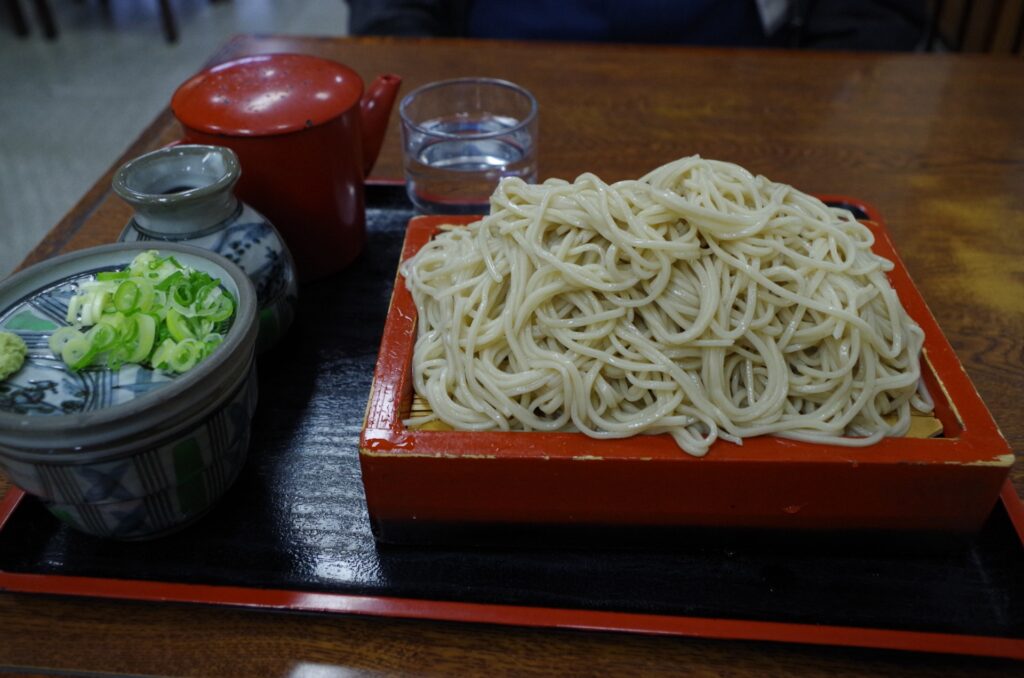
Who could forget one of Japan’s favorite foods, the humble soba noodle? Soba is the Japanese word for buckwheat. As previously mentioned, buckwheat grows better than rice in the cold mountains of Nagano, and soba noodles became a staple dish of the Nakasendo in the Kiso Valley. It’s also a popular fare throughout Nagano Prefecture. Starting from Magome post town in Gifu Prefecture and then going northwards, you will find soba shops in many of the post towns of Nagano Prefecture. In certain areas of Nagano, you may well see more soba shops than convenience stores.
Hoba-Sushi
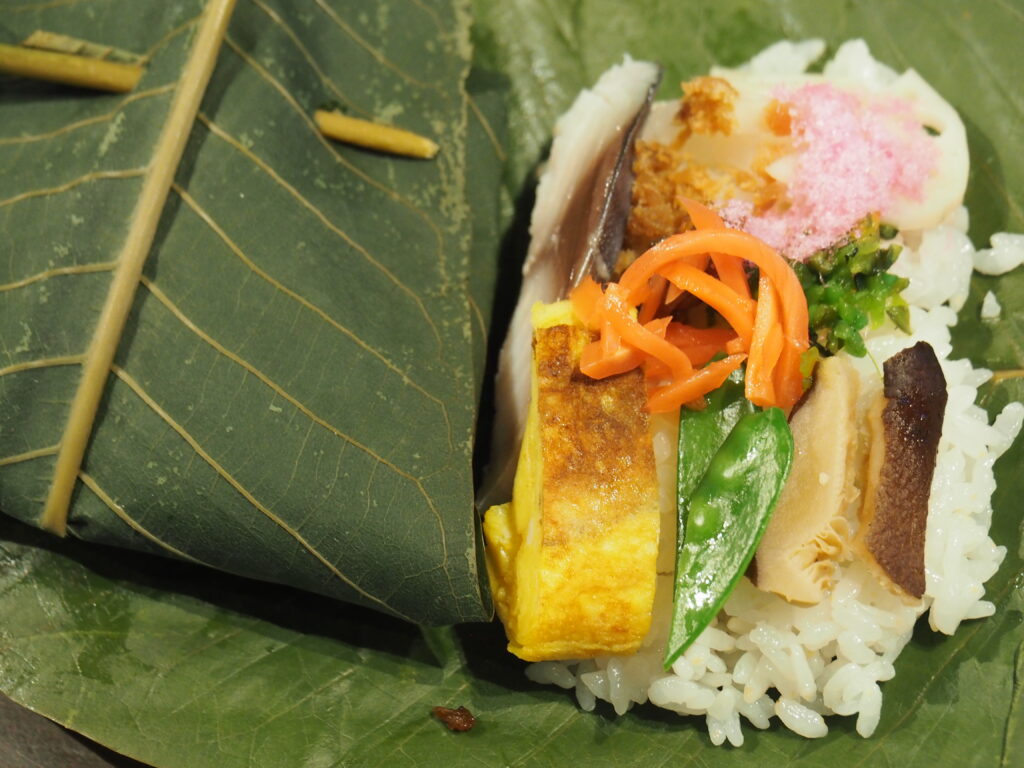
The ho-no-ki tree is a variety of magnolia native to Japan. It has white flowers and very large leaves known as hoba. Hoba-sushi is the local way of making packed lunch sushi, wrapped in the leaves of the ho-no-ki. Flavored sushi-rice is covered with delicious toppings including pickled vegetables, salted fish, stewed tofu, and more. The aroma of the hoba leaf transfers onto the food and the result is unique aromatic sushi, which stays fresh until lunchtime so that farmers and hikers can enjoy them on the go. It is also a great way to reduce wasteful plastic use. You can try making your own hoba-sushi at Echizenya, (see below for a deep dive on this historic shop).
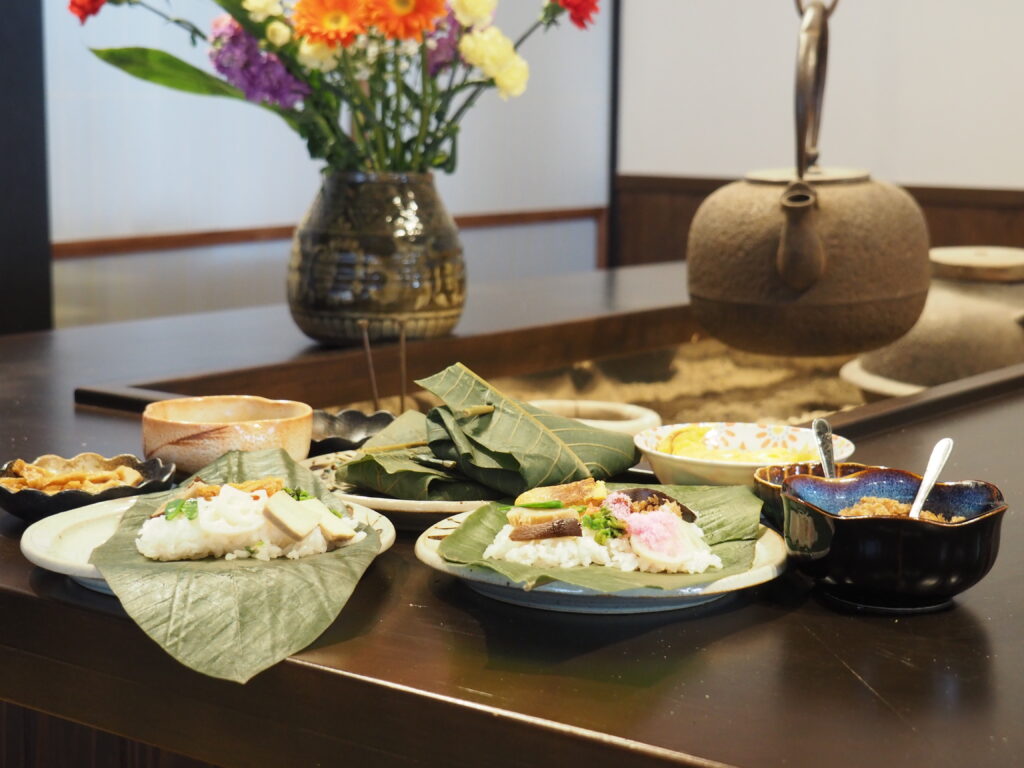
Other items made with the hoba leaf on the Nakasendo include hoba-maki (mochi sweets wrapped in a hoba leaf), and hoba-steak (beef steak cooked on a hoba leaf).
Sunki
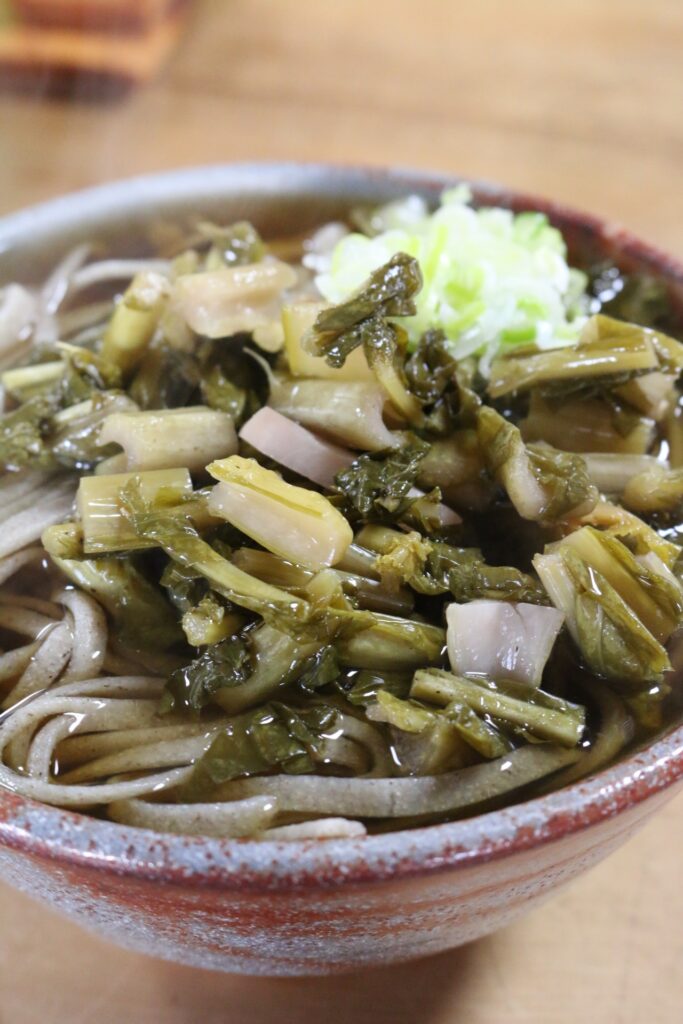
Sunki is a fermented food of the Kiso Valley made from turnip leaves. It is a historical food from the Edo period which utilizes lactic acid for fermentation and does not use salt (sea salt was difficult to get so deep in the mountains). The Kiso Valley has long, cold winters so fermented foods were essential for making it through the colder months. Sunki is only eaten in winter and you are likely to find it in soba shops served on top of noodles, especially in the northern parts of the Kiso Valley.
Sake (Nihon-shu)
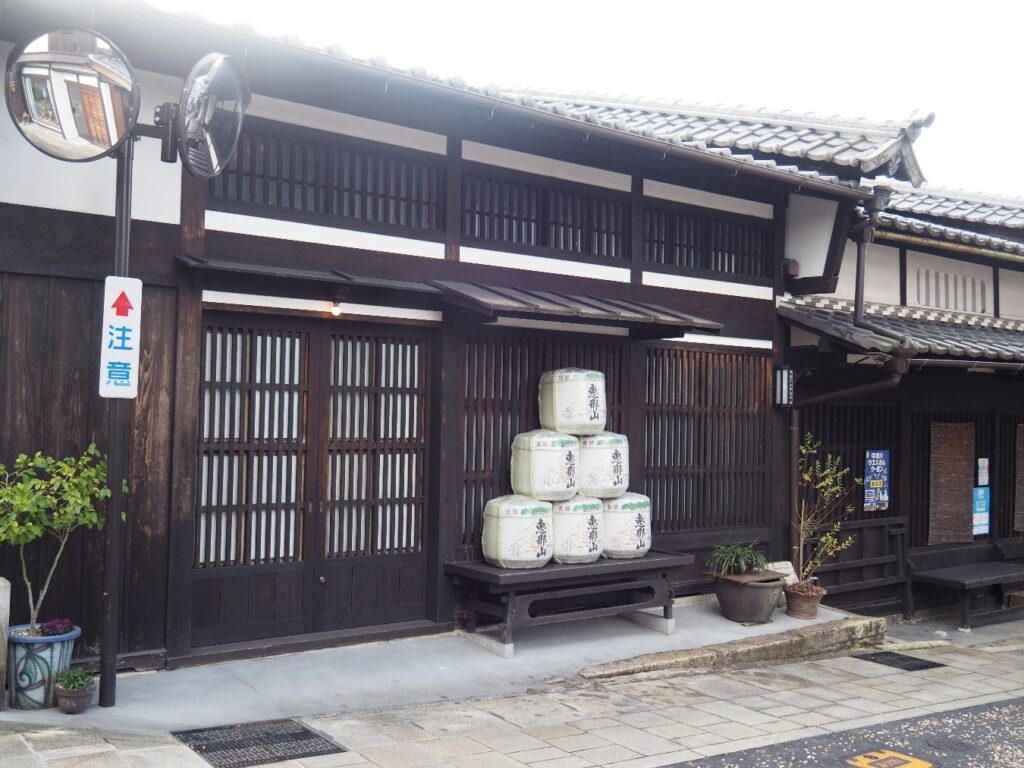
The Nakasendo was once a place full of rowdy traveling samurai, pilgrims (many of whom were using a “pilgrimage” as an excuse for an adventure), and many others who loved a drink. So, sake naturally flew off the shelves. In Nakatsugawa post town, Hazama Shuzo is a sake brewery with a rich history and a prime location. You can go inside and have a look at their display of old sake brewing equipment. Local restaurants and izakaya are great places to give the local sake a try.
Hyakusou
After talking about sake, we must deal with the hangover the next day. And here we come to hyakusou. Literally meaning 100 herbs, hyakusou is a bitter traditional medicine made out of the extract of tree bark. It helps with stomach issues and hangovers. It originates in Kiso and is deeply connected to the worship of Mt. Ontake. You will find it sold all over the place in the Kiso Valley and in the post towns of the Nakasendo.
Sanmon-Mochi
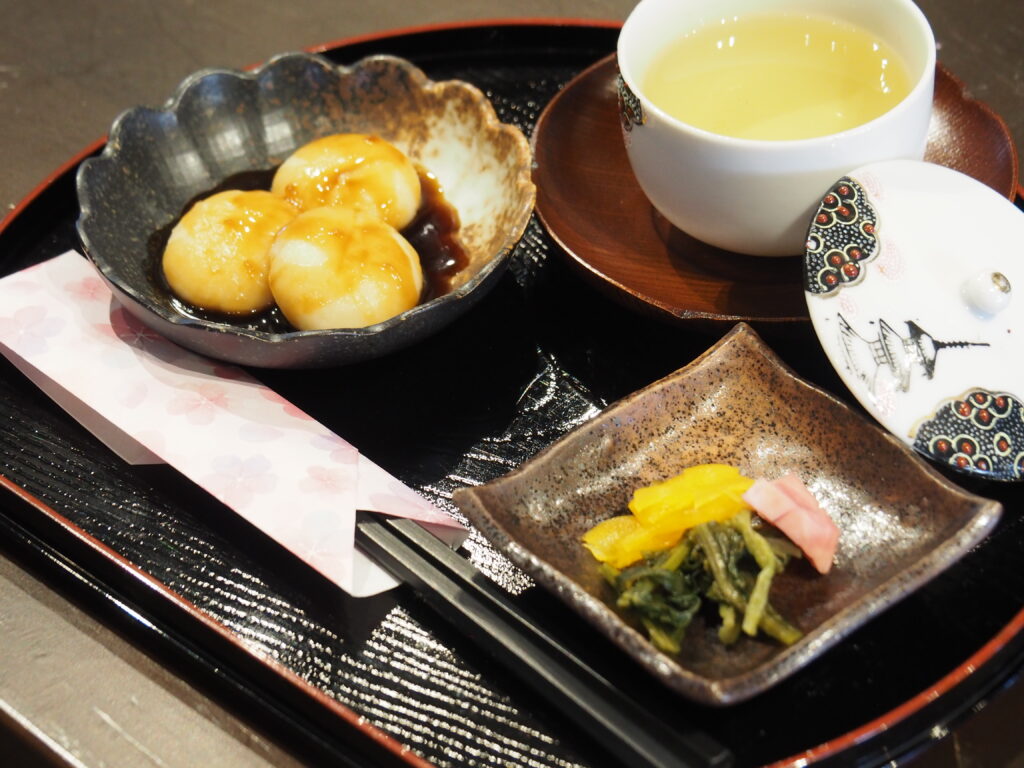
Now, as promised, we get to our deep dive. Echizenya is a teahouse on the Nakasendo between the post towns of Nakatsugawa and Ochiai. It is run by the Tsukada family. Mr. Tsukada is the 14th generation owner of the teahouse and these days his wife runs the shop.
Echizenya is located on the top of a steep hill and was once a popular tea shop in the Edo Period. Back then, their signature treat, sanmon-mochi, became famous and gained extreme popularity. The sweet is simple: boiled mochi topped with black sugar syrup. In the Edo period, black sugar was not something you could easily get hold of. Japan was all but cut off from international trade and the cold winters of central Japan certainly did not make growing sugar cane an option. Even today, how Echizenya got hold of the black sugar during the Edo period is a mystery. Although the Tsukadas do posit that maybe it was because their family roots back to Fukui Prefecture, which had a coastal port and was a domestic trading hub. Maybe through some family ties in Fukui, foreign sugar from Okinawa or elsewhere made its way to the center of Japan on the Nakasendo. Who knows but their guess is better than anyone’s.

At the end of the Edo period and the beginning of the Meiji restoration, Echizenya didn’t make it. The age of the samurai was over, the store shuttered its doors and that was that, until quite recently.
Mrs. Tsukada decided she wanted to start a café. And where better than the old teahouse in her husband’s family. So, they renovated, keeping the beams and the Japanese style and even installing a traditional hearth. And when it came to the menu of course they had to bring back the family secret, sanmon-mochi. In 2019 their shop reopened after about 150 years. Nowadays hikers on the Nakasendo like to stop and try the ancient sweet. Mrs. Tsukada is as smiley and as friendly as they come. If she isn’t too busy, she will show you around the ancient garden and chat away in broken English about her other true love, The Beatles. You can also try making the earlier mentioned, hoba-sushi here for yourself.
Get yourself over here and give it a try.
Experience Local Cuisine on the Nakasendo
